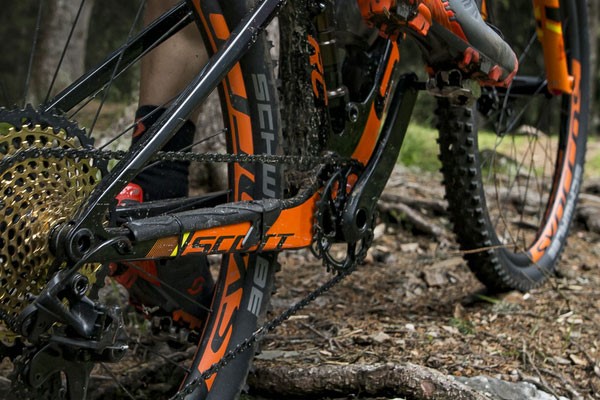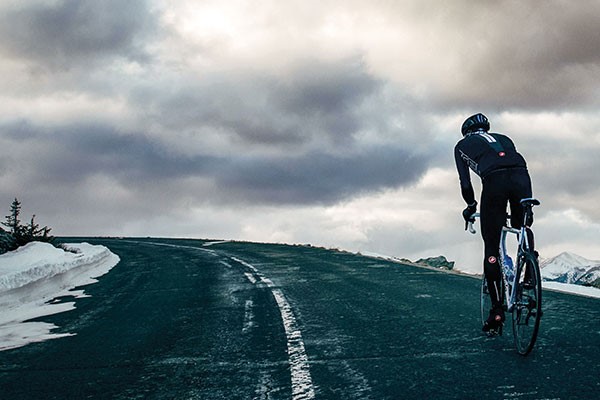Updated: 4th June 2021
The chainset defines your bike's gearing
Every bike has a chainset. It is the name given to a group of components that rotate when you turn your pedals, to drive the bike's chain and turn the rear wheel to propel the bike along.
The chainset has two sides. On the right is the drive side, which is a crank arm attached to one or more chainrings. On the left is the non-drive side, which is just a crank arm. In between is a spindle which passes through the bottom bracket in the frame, which is simply a set of bearings on which the cranks rotate.

Where to start?
Compatibility
If you want to upgrade your chainset, it's crucial you make sure it's compatible with the rest of your components.
Firstly, there are many different types of bottom bracket, including square taper and Shimano Octalink on mountain bikes, and press-fit and external bearing on road bikes. Chainsets often come with the right bottom bracket included, but in that case you need to make sure the bottom bracket is compatible with your frame.
Secondly, you need to make sure your chainset is compatible with the rest of your drivetrain - the chain, rear cassette and front and rear derailleurs.
If you are in any doubt about the compatibility of a new chainset, call 01792 799508 or send us a message for advice.
Chainrings
Change your range
The size of the chainrings determine your bike's gearing. Larger chainrings give harder, or bigger, gears. Bikes have one, two, or three chainrings, depending on whether they have a single, double, or triple chainset.

Chainset types
Compact, double or triple?
The type of chainset you choose will depend on the range of gears you need. There are three main types.
Singlespeed chainsets these have just one chainring. They are often used on hub geared bikes or singlespeed bikes, which have just one gear sprocket on the rear wheel. Some bikes, particularly mountain bikes, have a cassette on the rear wheel with several gears and a singlespeed chainset.
Double chainsets as you'd expect, double chainsets have two chainrings. Depending on the number of sprockets on the bike's cassette, this means the bike will have 14, 16, 18, 20, or 22 gears.
Triple chainsets This is a chainset with three chainrings. Depending on the number of sprockets on the bike's cassette, this means the bike will have 21, 24, 27, 30 gears.
To change your chainset from double to triple or vice versa, bear in mind that you will probably also need to change your shifters, front mech, rear mech and bottom bracket. Get in touch if you need more advice on what compatible parts you need.
Mountain bike chainsets
Choose the right chainset for your riding style and the terrain.
Single ring

This increasingly popular set-up has just the one chainring with a cassette and rear derailleur at the rear of the bike. A chain device is often used to help guide the chain and stop it coming off the chainring during gear changes.
Double & bash

This is the same as a triple chainset, except the largest outer ring has been replaced by a bashguard. This protects the remaining two chainrings. This set-up is suited to aggressive riding where the chainset needs extra protection.
Road Bike chainsets
Get the best option for speed or versatility.
Compact

A compact chainset is also a double-ring chainset, but it has smaller chainrings to make pedalling easier on hills. It is perfect for sportive riding, general road riding and commuting.
Double

A standard road double is usually found on more serious racing bikes, as it is has high gear ratios for flat-out speeds. This does mean steep uphills are more challenging, as it lacks the low gears to make pedalling easier. A road double is most suited to road racing, fast descending and time trialling.
Road triple

Some road bikes have a triple-ring set-up to give a similarly wide range of gears to that found on a standard mountain bike. This is useful for riders needing a wider range of gearing, for instance touring or hilly sportives.
Most Popular Chainsets
Frequently Asked Questions
Typically, a chainset includes both crank arms and chainrings.
Once the discipline and bottom bracket type are known there is a more concise choice.
Not all chainrings are the same, there are different fittings for different cranks.
A chainset with 3 chainrings, typically used on touring bikes.
No, a bottom bracket will dictate what chainset and therefor what spindle diameter will fit.
A longer crank will give more leverage but will reduce ground clearance.



